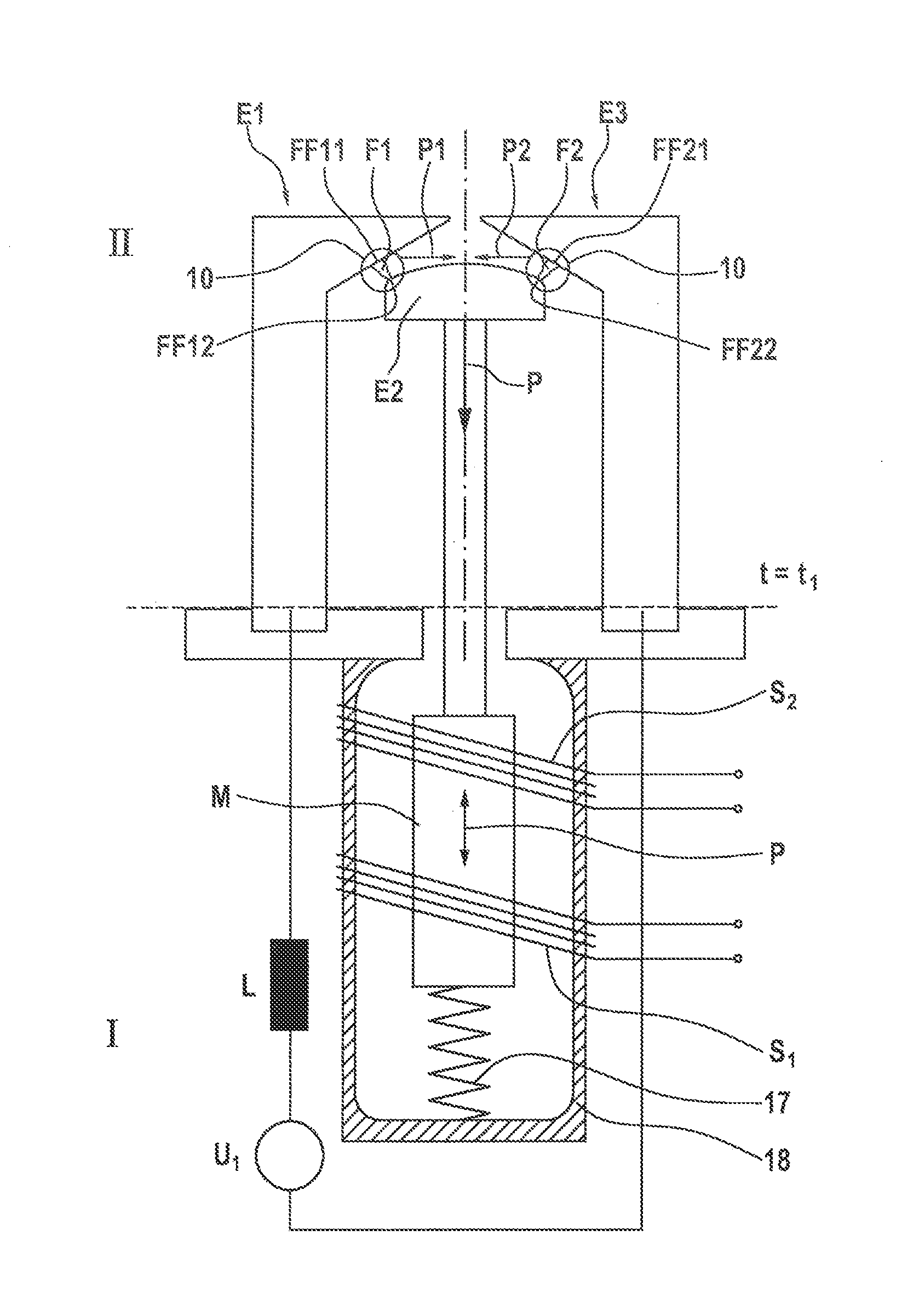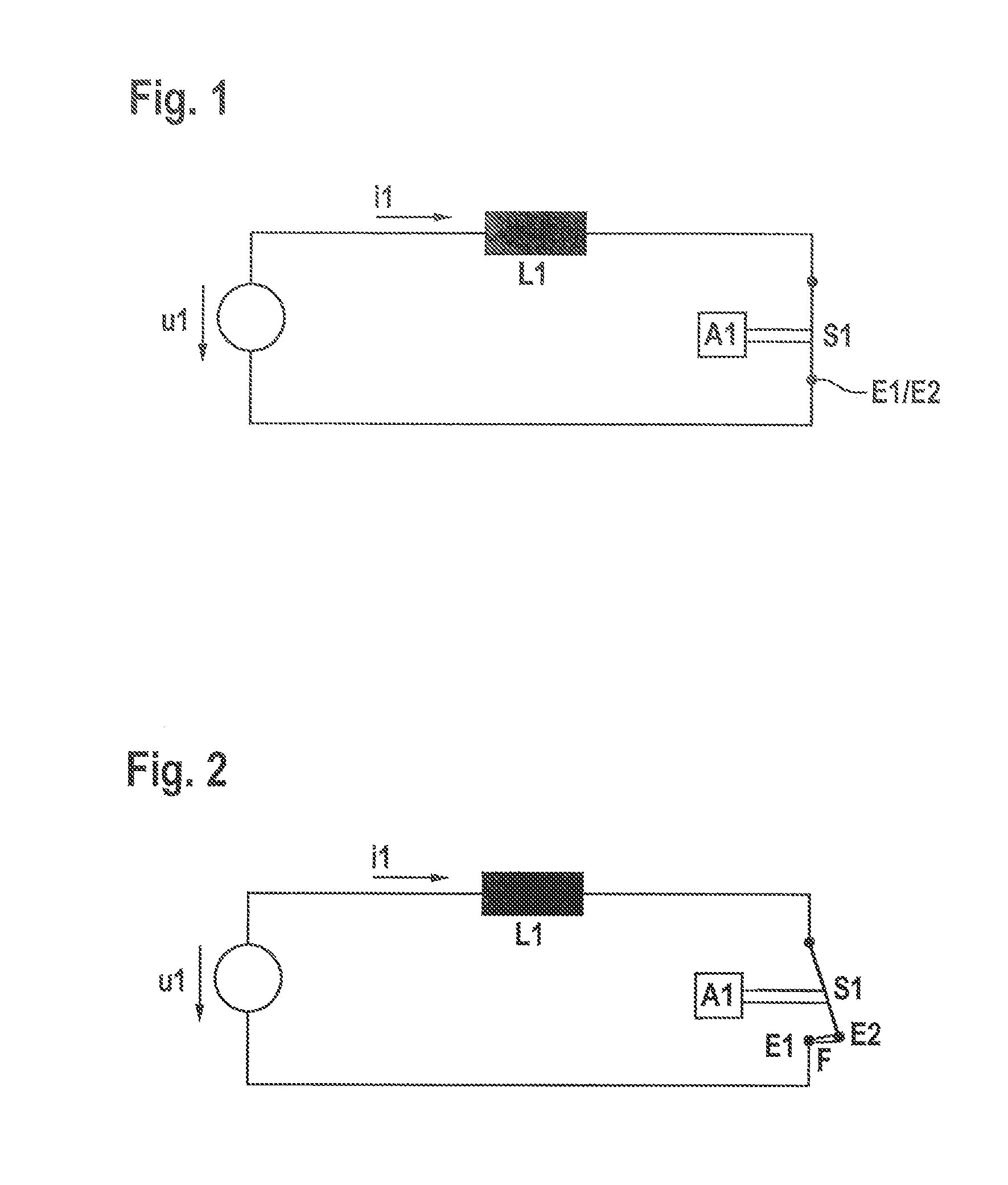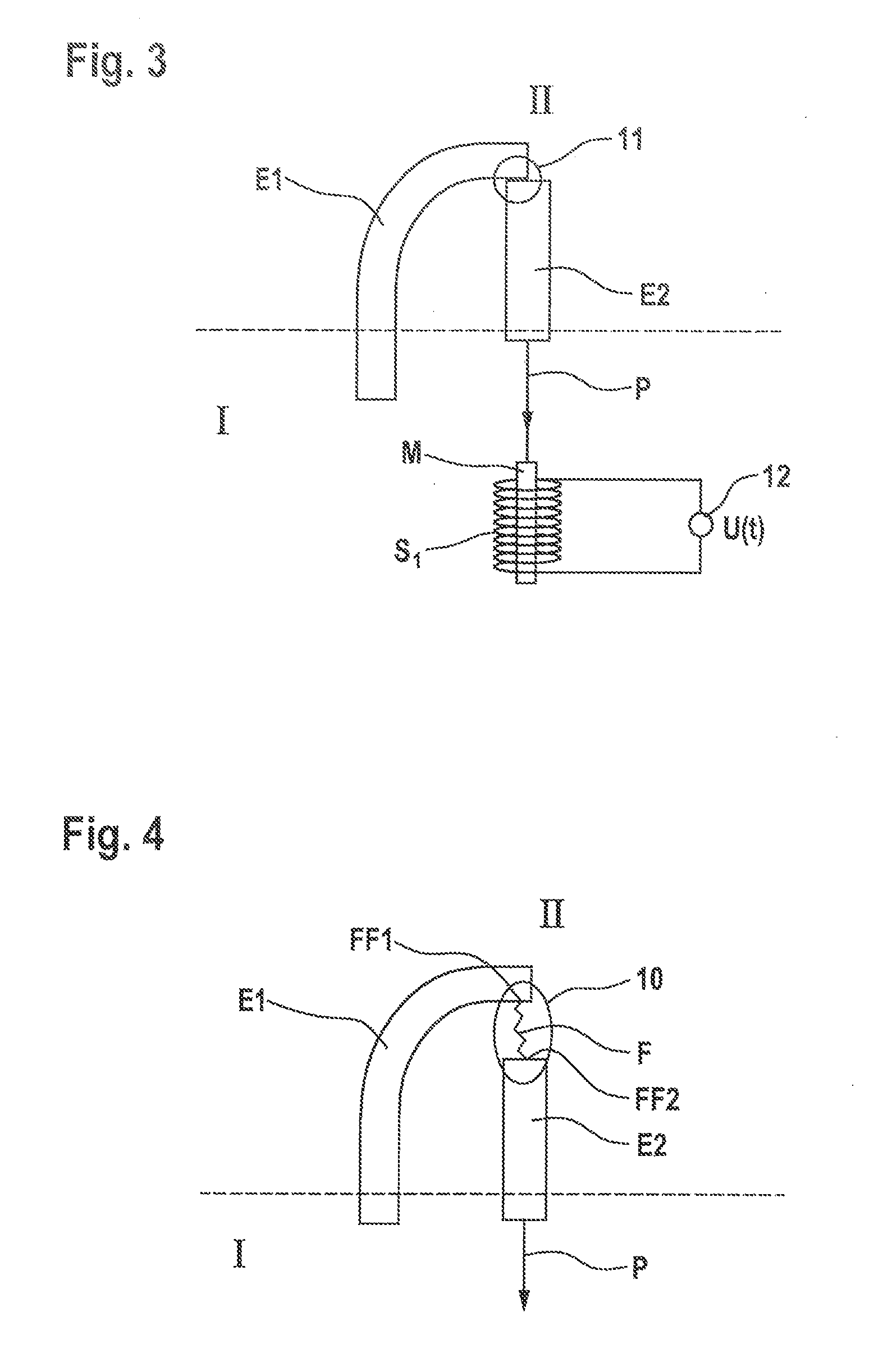Ignition unit for an internal combustion engine
a technology for internal combustion engines and ignition units, which is applied in the direction of spark plugs, machines/engines, x-ray tubes, etc., can solve the problems of increasing the demand for material and electrical energy for the ignition process, and achieve the effect of small volum
- Summary
- Abstract
- Description
- Claims
- Application Information
AI Technical Summary
Benefits of technology
Problems solved by technology
Method used
Image
Examples
Embodiment Construction
[0035]FIG. 1 shows an electrical energy source u1, which is configured to drive a current i1 with the aid of an inductor L1. For this purpose, a switch S1 downstream from inductor L1 is closed to ground with the aid of an actuator A1. Switch S1 includes a first electrode E1 and a second electrode E2. In FIG. 1, the two electrodes E1, E2 are in electrical contact with one another. Inductor L1 is charged with magnetic energy with the aid of current flow i1.
[0036]FIG. 2 shows the system represented in FIG. 1 after switch S1 has been opened with the aid of actuator A1. Due to the fact that switch S1 is now open, an ignition spark F has formed between electrodes E1 and E2, which are now spatially separated from one another. Its energy is provided by the magnetic field of inductor L1. If switch S1 or the system of electrodes E1, E2 is situated within a combustion chamber II and ignitable mixture is situated in the area of ignition spark F, the ignition spark may be used to ignite the mixt...
PUM
 Login to View More
Login to View More Abstract
Description
Claims
Application Information
 Login to View More
Login to View More - R&D
- Intellectual Property
- Life Sciences
- Materials
- Tech Scout
- Unparalleled Data Quality
- Higher Quality Content
- 60% Fewer Hallucinations
Browse by: Latest US Patents, China's latest patents, Technical Efficacy Thesaurus, Application Domain, Technology Topic, Popular Technical Reports.
© 2025 PatSnap. All rights reserved.Legal|Privacy policy|Modern Slavery Act Transparency Statement|Sitemap|About US| Contact US: help@patsnap.com



